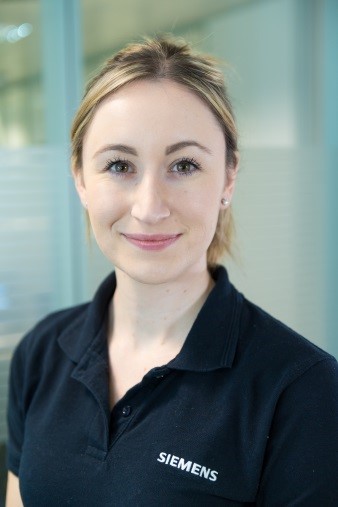 What is your current role?
What is your current role?
The Solutions Engineering department where I work has twelve controls engineers and seven mechanical engineers. My main responsibility is to lead and deliver technical solutions for operational issues across Industrial RB211, Trent and Avon Packages, utilising Root Cause Analysis tools and techniques to diagnose and resolve problems.
Outline your career so far. Have you worked on any unusual or high profile projects?
I joined Rolls-Royce in 2008 as a Technical Apprentice, where I gained valuable on-site experience in practical and technical placements around the Defence Aerospace sector.
In 2012, I began as a Technical Communications Engineer, producing technical instructions for the maintenance, operations, repair and overhaul of our gas turbine products. I supported an Industrial RB211 training programme for the establishment of the first approved overhaul facility in China.
You were registered as an EngTech (Engineering Technician) before becoming an IEng (Incorporated Engineer)? Describe your experience of becoming an EngTech
I was encouraged to join the Institution during my apprenticeship; my employer encouraged this as part of my Continued Professional Development.
Many of my colleagues were Associate Members, and a handful had achieved chartership; a very prestigious level of recognition. So I applied and successfully gained EngTech status with the Institution.
What encouraged your registration as an IEng?
Achieving chartered status with the Institution has always been one of my main career aims.
After EngTech, IEng was the next natural step in my career progression. I focused on the expansion of my engineering foundations through my BEng degree, as well as applying myself in my job to step into more challenging roles with higher responsibilities.
I have also concentrated heavily on my community involvement through STEM outreach programmes as well as setting up and being part of a STEM committee at Siemens.
Gaining IEng status was a confirmation that my hard work and personal development had grown beyond the EngTech level. I had positively met the more advanced competences of an Incorporated Engineer, a level that shows my employer that I have actively promoted my development through my education and work to become a better engineer.
Describe how you became an IEng.
As an EngTech member, I was already familiar with the steps and process for IEng. The guidance notes on the Institution website gave me valuable direction towards the competence framework assessment, as well as providing useful resources and application examples.
During my annual reviews with my manager, I agreed an Individual Development Plan (IDP) to set out my personal targets, and the opportunities and support I required.
I was then able to align myself to projects which aided my growth and development to meet the IEng competences. This included academic progression through a BEng degree, taking on lead roles for new engineering projects, as well as leadership and mentoring opportunities with apprentices and graduates in the department.
I was also able to speak to colleagues who were registered with the Institution, this helped me to prepare and familiarise myself for the IEng application.
Did anything surprise you about the experience?
The application was a bit longer than I expected! But on the plus side, it gave me the chance to talk in detail about the different skills that I had built and gained through my various work projects.
The interview itself was much more relaxed than I anticipated and felt like more of a conversation between professionals, as opposed to a cross-examination as I had thought it might be!
What advice would you give someone considering professional registration as an IEng?
Don’t hesitate to submit your application - get organised and get a plan in place as soon as you have gained EngTech!
The earlier you can prepare, the more efficiently you can use your time to set out work and projects to achieve the IEng competences. Use the Qualification Checker on the website to see if you are eligible, and then begin to review each of the competences against your skill-base and experience. Having your manager or a mentor on board with you early on in the process can also support you with your application.
How has becoming an IEng benefited your career?
The IEng professional registration shows I have achieved required competences. When I work with fellow engineers from cross-functional divisions or end-customers, it helps give them the confidence in my capabilities and ability to deliver.
What I believe it shows more strongly though, is my enthusiasm to grow and develop. Working through the professional membership ladder gives individuals a vision to achieve; to be the best engineer they can be, broadening academic knowledge, applying your abilities to more advanced projects, as well as learning to inspire others through community involvement.
How does your employer benefit from you being an IEng?
My IEng status shows my employer that I am an engineer with the drive to learn. It shows that I have proven myself to meet the IEng competences and that I am a committed to my continued professional development.
What are your future career goals?
Having started my new role as a Service Engineer in October 2016, I am currently focused on developing my skills to allow me to excel in my position. Gas turbine engineering is such a broad and comprehensive subject, and I am challenged in my role almost every day. I know that I have plenty still to learn!
I plan to develop my mechanical knowledge through further training courses, through work-place learning whilst working with our gas turbine packages and customers, as well as aiming towards an MSc.
As my skills and knowledge grows, I would like to be on the forefront of some of our largest engineering projects in the future.
Find out more about becoming an Incorporated Engineer (IEng).